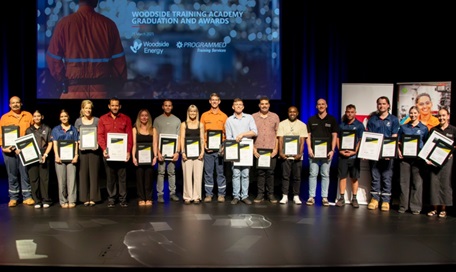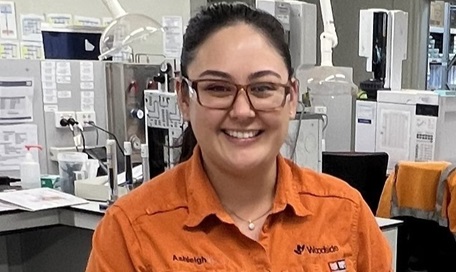A day in the life of a Graduate New Energy Engineer
Meet Michael, a Graduate New Energy Engineer
A career at Woodside can take you in many different directions. We asked some of our graduates to share a glimpse of what their typical work days look like.
Here's a day in the life of Michael, Graduate New Energy Engineer.
/michael-snip-final.png?sfvrsn=5767f136_1)
About Michael
Role: Graduate New Energy Engineer
University: Curtin University
Degree: Bachelor of Chemical Engineering (First Class Honours)
A typical day
8:00 am
My day usually begins with me making my way to the office for 8.00 am. Currently, I am located outside of the CBD so my average commute to work takes approximately 80 minutes. However, as I use public transport for the majority of my travel, it serves as a good time to respond to any emails and plan my day out.
I arrive at the Mia Yellagonga campus and set up my desk for the day ahead. I greet my team before starting the tasks that I planned out during my travel. As a New Energy Graduate, in the New Energy Solutions team, I am focusing on the development and qualification of upcoming technology that may be used to aid the energy transition. This includes all types of technology ranging from production technology, heat transfer and compression units, storage vessels and transportation methods for new energy products such as hydrogen and ammonia.
Woodside Energy, along with many other companies and countries around the world, are actively targeting reductions to their net equity greenhouse emissions through new energy projects hence, it is exciting to be involved in projects that differ from Woodside Energy’s base business operations. During the process of developing new energy products and projects we are challenged with providing safe work standards and environments, while utilising some of the latest and innnovative technology.
9:00 am
Today, I will be looking into the liquefaction of hydrogen. Essentially, this is the conversion of hydrogen from gas to liquid form. For hydrogen, this process is extremely challenging due to its extremely low boiling point and will be imperative to future new energy projects and transportation vessel design. This involves the development of a process that is both realistic and efficient for producing liquid hydrogen. A great way to go about this task is to break the overall liquefaction process down into smaller sub-sections and critically assess the different components that make up the sub-sections and their corresponding equipment and operating conditions. Once one sub-section has been analysed, move on to the next then once all sub-sections have been completed assess how the changes that I have made to the flowsheet have affected the overall hydrogen liquefaction process. This work will be primarily completed through available simulation software to model and predict how an actual operating plant may perform.
10:30 am
To break up my morning, I decide to have a short 10-minute break to have a hot drink. Unfortunately, I have not developed the taste buds to enjoy coffee yet, however, I do love hot chocolate. Usually, I make one using the machines provided by Woodside Energy, but alternatively, this is a good time to potentially have a short catch-up with a colleague at one of the cafés on or surrounding the Mia Yellagonga campus before getting back to work.
1:00 pm
After lunch, I will be heading back to my desk to continue some simulation work for the hydrogen liquefaction process I mentioned earlier. The simulation work is a part of the scope for a bigger engineering project which is expected to take months to complete. Therefore, steady progress is required to ensure the project meets the expected deadlines. Additionally, this is assisted by taking the time in the morning to plan out my goals for the day and how they will contribute to the completion of larger scopes.
Towards, the end of the day I will be involved in a meeting with some colleagues and an external contractor to learn about different methods of transferring liquid hydrogen to and from shipping vessels either at a production facility near a port or at the destination of the final user. This is just another component of design that Woodside Energy needs to consider in the development of their new energy projects. While this serves as an excellent opportunity to broaden my knowledge of the requirements to develop the hydrogen value chain, it also directly ties into the previous simulation work that I have been completing as the next step after liquefaction is the storage and transport of the liquid hydrogen.
5:00 pm
Tonight is a bit different to my standard evening as I will be attending an event organised by one of the local universities, the University of Western Australia. The event is all about the future of energy and what that means for companies in the industry. This has a wide target audience varying from a range of engineering backgrounds, environmental & agricultural sciences, and commerce and law majors. Overall, this serves as an excellent experience to learn about what universities are doing to adapt their alumni to the changing energy mix and to communicate with students about the exciting new energy projects that Woodside Energy is developing.
Find out more about our graduate and student pathways here.



